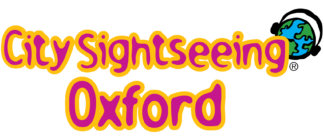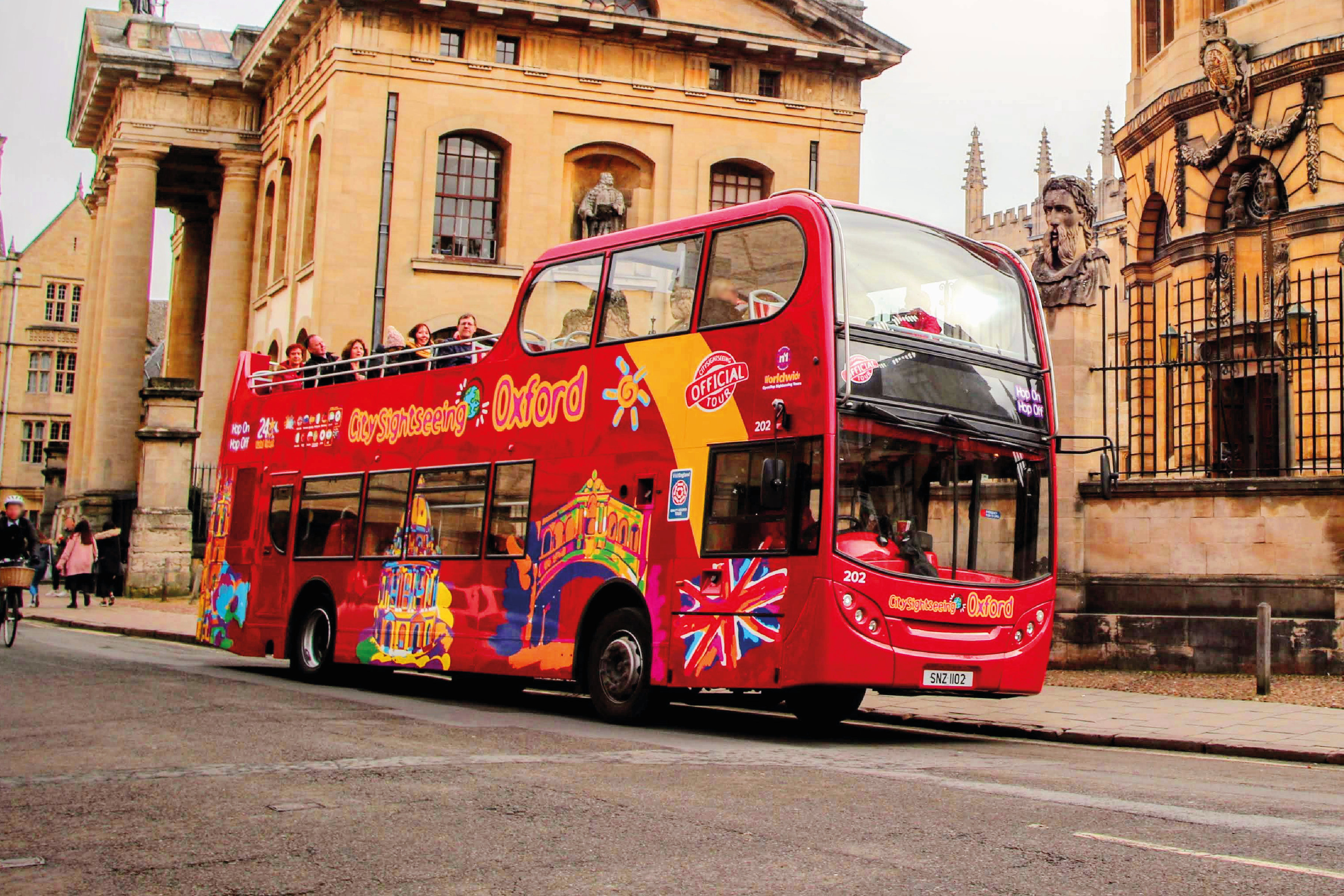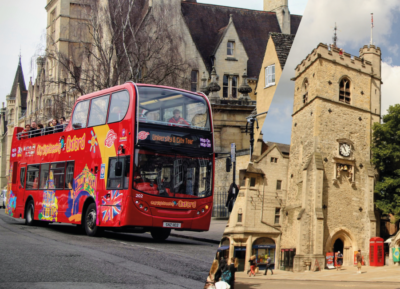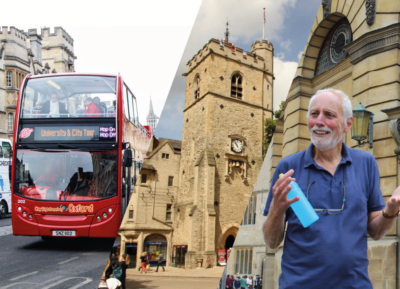
Bike and Bus Tour – The Oxford Canal and Jericho
Summary
A circular tour taking you off the road and onto the tranquil Oxford Canal where you meander towards the vibrant Oxford district of Jericho. There, as well as enjoying the independent local shops, cafes, restaurants and pubs, you will be able to visit an award-winning University building, explore the historic suburbs in the heart of the district, visit the largest University press in the world, find a 19th hidden gem for one man’s tribute to his dog, and also visit the 18th century observatory before heading back to the train station on quiet lanes.
Recommended duration: 1:15 to 2:15 hours (depending on stoppage times)
Distance: 3.3 miles
Map overview
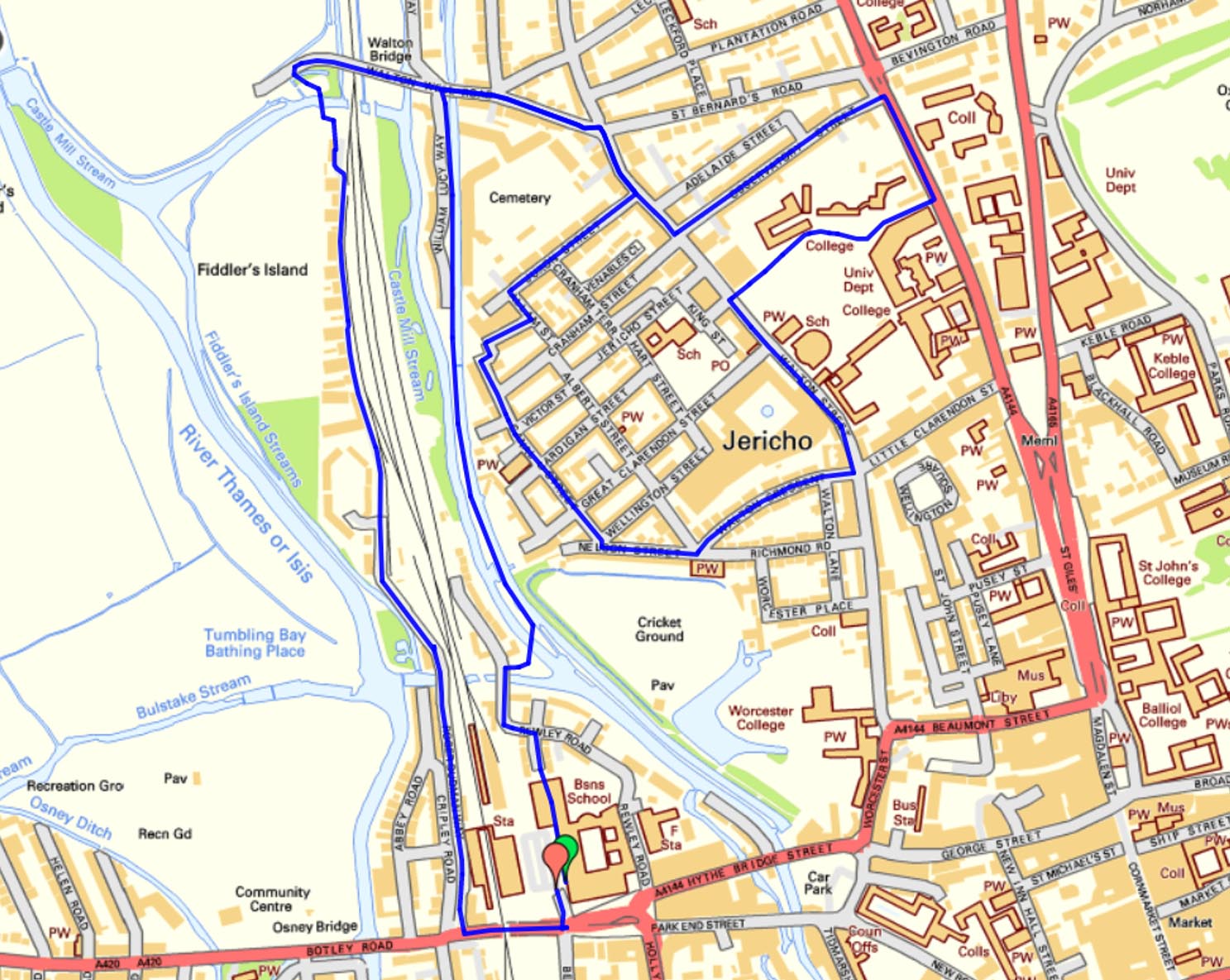
Directions and points of interest summary
- Depart the City Sightseeing Oxford bus at stop 1 – Oxford Rail Station.
- Collect the hire bikes from the cycle parking at Oxford Rail Station.
- With the train station entrances on your left and main cycle parking area behind you, go past the bus stops and taxi ranks over the zebra crossings heading towards the Thatcher Business Education Centre.
- Follow the cycle path past the Thatcher Business Education Centre (so that the building is on your right).
- Turn left onto Rewley Road.
- Follow the road round as it bends right.
- Join the Oxford Canal on the right over the bridge.
- When on the canal path, turn left (heading away from the train station).
Point of interest: The Oxford Canal - Leave the Oxford Canal path at bridge 242.
- When leaving the Oxford Canal, turn right onto Walton Well Road.
- At the roundabout, turn right onto Walton Street. You are now entering the bohemian part of Oxford known as Jericho.
Point of interest: Jericho - Ride past Walton Street Cycles & Bainton Bikes and turn right onto Juxon Street.
- Turn left onto Allam Street.
- Turn right onto Mount Street
- Follow the road around to the left as it turns into Canal Street.
Point of interest: The Old Bookbinders
Point of interest: St Barnabas Church - Turn left onto Nelsen Street.
- Turn left onto Walton Crescent by the Jewish Synagogue.
- Turn left onto Walton Street.
Point of interest: Oxford University Press
Point of interest: The Blavatnik School of Government - Opposite Cardigan Street (on your left), turn right and ride through the ballads, past the Doctors’ surgery and follow the road through the Radcliffe Observatory Quarter.
Point of interest: Radcliffe Observatory
Point of interest: Green Templeton College - You are now riding through the site of the old Radcliffe Infirmary and past Green Templeton College and the Radcliffe Observatory.
- Turn left onto Woodstock Road.
- Turn left onto Observatory Street.
- Turn right onto Walton Street.
- At the roundabout, turn left onto Walton Well Road.
- Continue straight all the way down Walton Well Road until you see a pedestrian and cycle path on your left hand side just before the Walton Well Road car park.
- Turn left onto this path.
- Follow the path as it turns into a residential road past the accommodation on Roger Dudman Way.
- At the end of Roger Dudman Way, turn left onto Botley Road and head under the railway bridge.
- At the roundabout, turn left into Oxford Train Station
- End of the tour, lock the bikes at the Oxford Train Station cycle parking facilities.
Points of interest (explained)
The Oxford canal opened in 1792, and overnight the price of coal halved in price. The Oxford canal connects the city with the network of canals which extend from East Anglia to the West Midlands and was an important trade artery between the Midlands and London. Canals are ancient man made construction dating back as a far a Roman times. In 18C and 19C, the canal was used solely for transporting freight up and down the country. This was one of the most important transport links in Britain, its principal traffic was coal from Warwickshire but with the advent of the railway the industry declined. Boatmen were no longer able to afford their houses so they converted their boats into homes. Thriving communities grew up; in fact in 1838 the houseboat community was so large that a floating chapel was moored near Hythe Bridge. The track you ride down would have been full of horses as late as the 1950s as the boatmen preferred horse drawn boats long after others had converted to diesel power.
Jericho is the historic northern suburb of Oxford. This area used to lay beyond the city walls and was a place of rest for travellers who reached the city after dark when the gates had been closed. In fact, the name ‘Jericho’ signifies remote place. Jericho became a vibrant industrial area with the arrival of the canal in 1792, the Eagle Ironworks and of course the Oxford University Press. It is hard to imagine when you pass the busy restaurants and arty cafes of Walton Street today, but Jericho had a short-lived phase as Oxford’s red-light district in the 1950’s. There were plans for the whole area to be demolished and new housing built to rid the city of this undesirable spot. However, a local campaign in the 1960’s saved the area lead to a wave of council investment to create the Jericho we see today.
Traditional pub in the heart of Jericho, first opening in 1869 was the scene for many of the closing scenes in the Inspector Morse series.
Saint Barnabas Church is very distinctive with its Romanesque basilica. It is not clear why this building was dedicated to the relatively uncelebrated Saint Barnabas.
Thomas Combe was the founder and benefactor to the Church. He joined OUP as a printer in 1837, and by 1851 was a senior partner amassing a considerable fortune. He was a keen patron to the arts and particularly the Pre-Raphaelites – today many of his collection of art works are on display in the Ashmolean Museum.
During the building of the church, as a tribute to Thomas Combe, architect Sir Arthur Blomfield included a small statue carving of Thomas Combes dog, Jesse, at the base of one of the pillars.
The church was the setting for a scene in ‘Jude the Obscure’. This area has inspired other great works of fiction.
Oxford University Press (OUP) is the largest press in the world by number of publications; some 4500 new books a year are published here. The press dates from the very beginning of printing in Oxford in 1480. It is a department of the University itself which officially entered the print trade in 1580 after petitioning Queen Elizabeth I to grant a license at a time when printing outside London was strictly controlled. The press began publishing bibles, prayer books and scholarly works but it was the creation of the Oxford English Dictionary in 19C which lead to the massive expansion of the print works. Relations between the press and university have been close but stormy and it remains a major financial support to its parent university.
Blavatnik School of Government
Founded in 2010 the Blavatnik School of Government is one of Oxford University newest buildings and offers students a yearlong graduate degree for Master of Public Policy or a three year full-time research degree DPhill in Public Policy.
The building was designed by Swiss architects Herzog and de Meuron. Although some controversy at the beginning of the project the building has later won architecture awards.
The building became operational in 2015 and was officially opened by HRH the Duke of Cambridge in 2016.
The building is named after businessman and philanthropist Leonard Blavatnik who donated £75 million for its construction.
Radcliffe Observatory was the astronomical observatory for Oxford University between 1773 and 1934. It was founded and named after John Radcliffe (English Physician, academic & politician who left much of his wealth to charitable causes and a legacy behind him).
The observatory was in constant use up to 1939 when it was decided that viewing conditions were too poor (caused by weather, urban development and light pollution) and the observatory moved to South Africa. The building is now a centrepiece for Green Templeton College.
Green Templeton College is the merger between Gren College and Templeton College, which at the time of the merger was one of the first of its kind in modern history (formally announced in 2007).
Unlike many other colleges within Oxford, both Green College and Templeton college have always accepted both male and female students, as does Green Templeton college today.
Green and Templeton college are fairly new in Oxford standards (Green College was founded in 1979 and Templeton College in 1965).
The college has a specific academic profile, specialising in human welfare, economics and environmental well-being – including medical and health sciences, management and business and most social sciences.
Notable people to of studied at the colleges include; Ron Emerson, Nancy Hubbard, Stephen Robert Morse and Baron von Pfetten.
